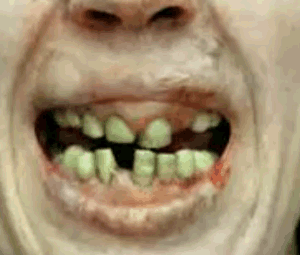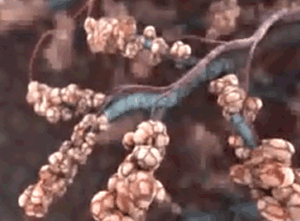Smoking is a very addictive and extremely harmful habit. So much so that authorities have chosen to mandate anti-smoking advertisements on packets of cigarettes.
The following images were taken from Australian advertisements.

It is no secret that smoking is linked to cancer of the lungs throat and mouth, as shown on the right. The face of a young smoker is permanently disfigured by cancer due to smoking.

Smoking can also cause a stroke in people as young as 32 years old.

Smoking causes arteries, such as the aorta, to collect fatty deposits on their wall.

The damage caused to the lungs by smoking is inescapable. A smoker's cough is a sure sign that damage to the lungs has already started.
Inside the lungs at the end of each branching tube we find tiny air sacs. These increase the surface area of our lungs where gas exchange between the air and blood takes place.



Continue with advertising and the tobacco industry.